
Probably aged seven or eight, the first time I came across a stuffed animal I made my Mum hide it behind the sofa, I wouldn't look at the mummy in the Tutankhamun exhibition (Dorchester, not Egypt) and finding a dead sheep on the beach gave me nightmares. More recently I stopped eating meat for all the sensible environmental reasons, but partly also just so I wouldn't have to think about dead things while I chewed anymore; an ancient building full of them shouldn't have held much appeal...
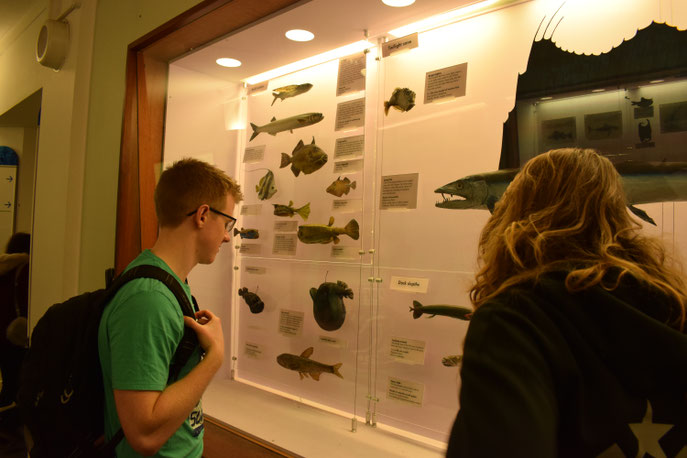

Despite their fading condition*, the Natural History Museum's taxidermy collection remains majestic. Displayed in collections, often based on biological "family" groups or wider evolutionary connections, you can gain a realistic sense of each species scale. The opportunity of such close range inspections, human eye to marbles, is usually either impossible or unethical with the live versions. The pine cone patterned pangolin, a strange scaly mammal creature, deep sea angler fish and all the most iconic predictors rested silently behind the glass for our observation.
Of course, everything was dwarfed by the newly placed whale skeleton...
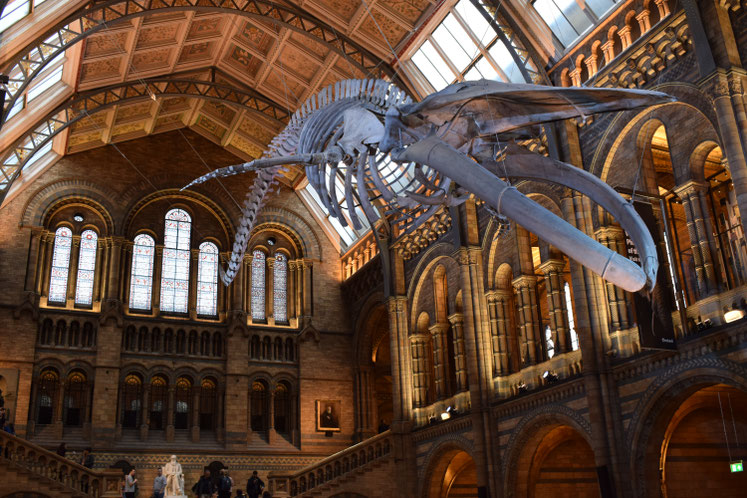
Originally stranded in Ireland in March 1891 (after being injured by whalers), this real skeleton has been preserved by the museum for over a hundred years.
Far from the grand inspiration of Hintze Hall, a space where the architecture alone reminds you of human potential or your own insignificance, the corridors dedicated to the human body now seem curiously dated.
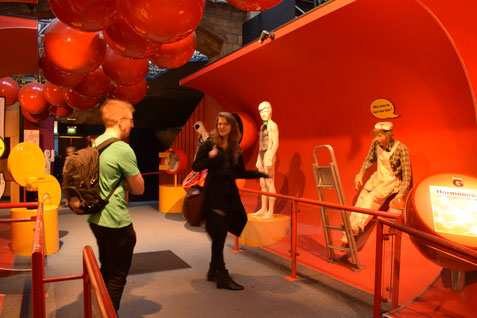


Iconic, in sepia tones, the dinosaurs stood to challenge our concepts of animal structure; their weaponised bodies all barbs and teeth in enormous skulls. The herbivorous loomed over our heads, reconstructed from a land before time, impressions of their skeletons lingered on the decorated walls and ceilings.

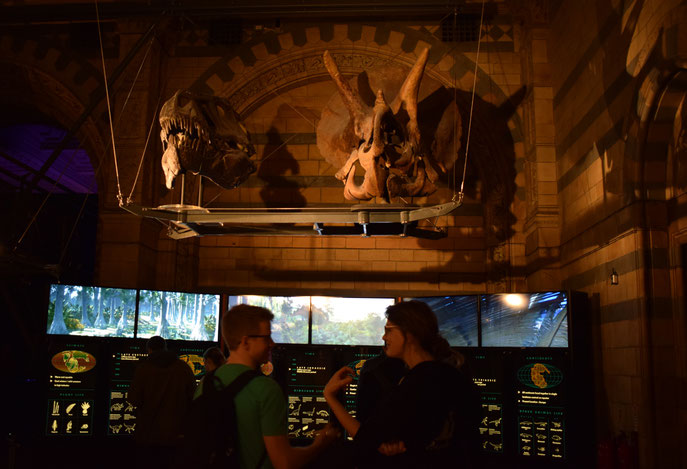
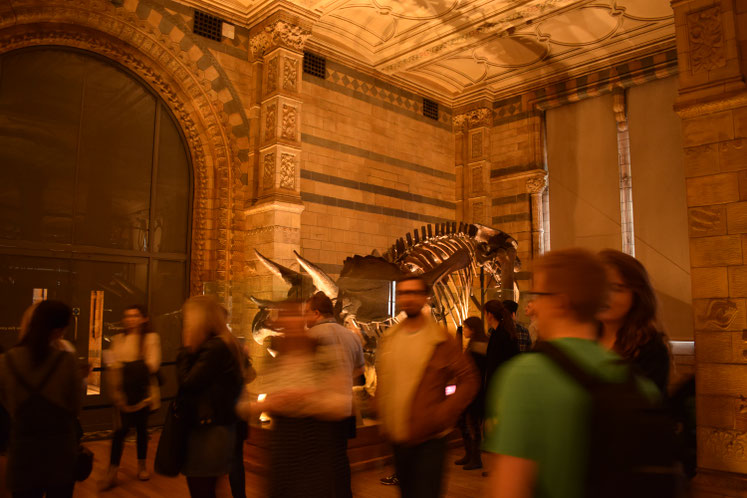
Upstairs in the classic whale/big animal room, suspended cetaceans transform the space into an eerie aquarium. To scale, the solid ones are thankfully models; their smiling faces never dredged from the sea, but as an accompaniment, they give the impression of a solid form to less friendly skeletons.
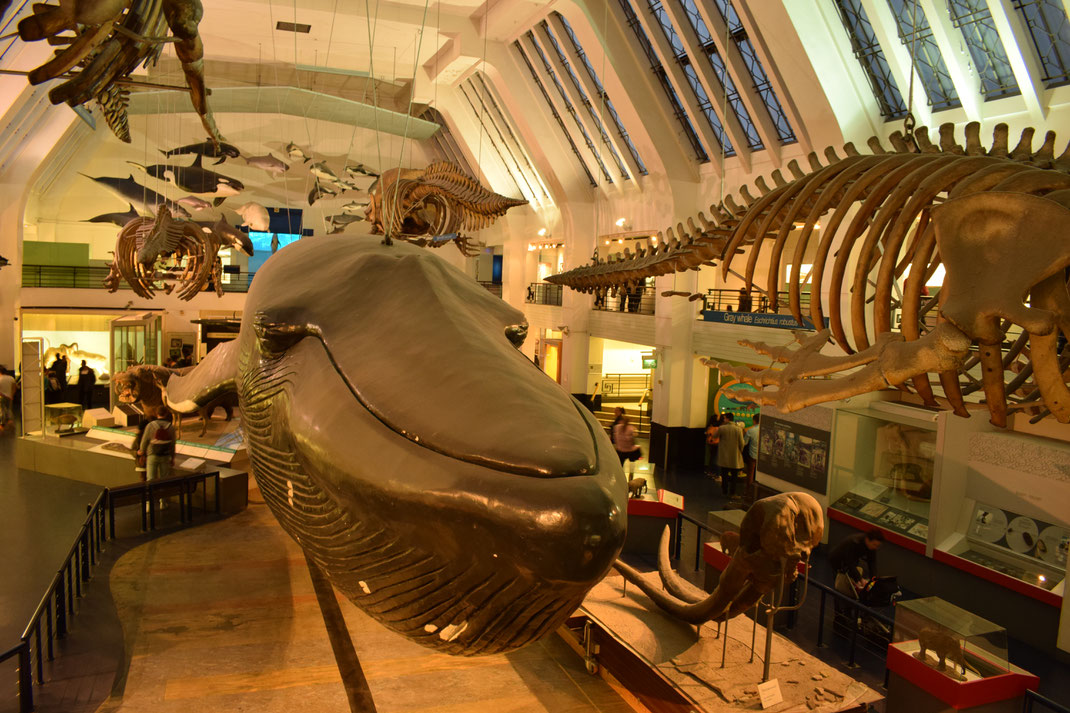
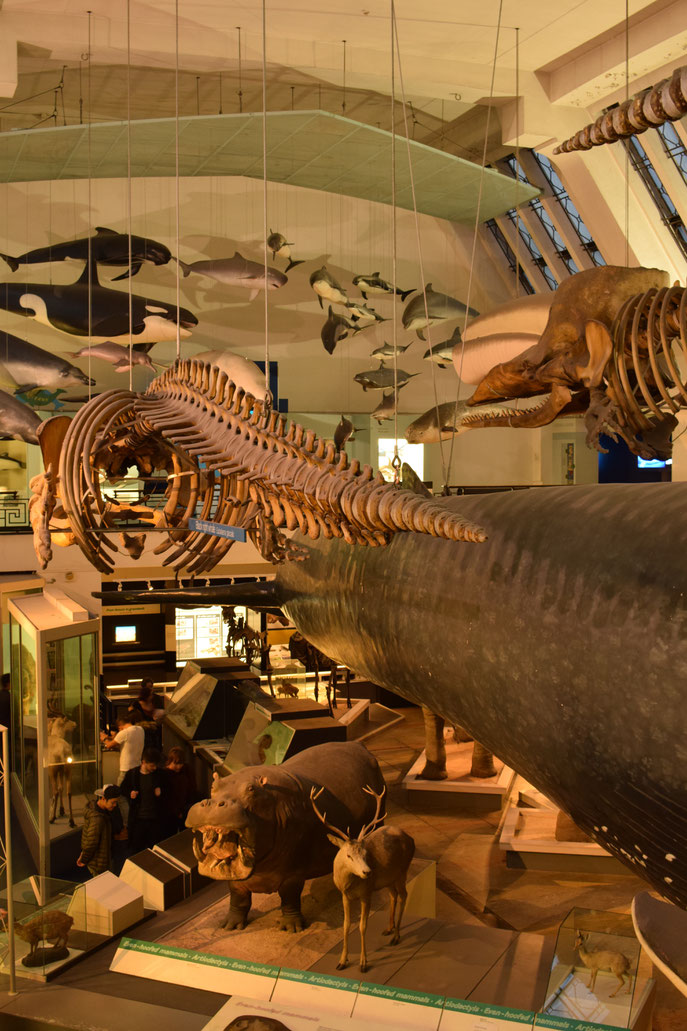

The main body (everything included in this post and much more) of London's Natural History Museum is free to enter. There are often also separate exhibitions with a fee. I would have loved to visit the Wildlife Photographer of the Year Awards again, but tickets were entirely sold out for the weekend. Until 28 May 2018, you can book them in advance here.
*NHM do not replace their specimens for obvious reasons.
